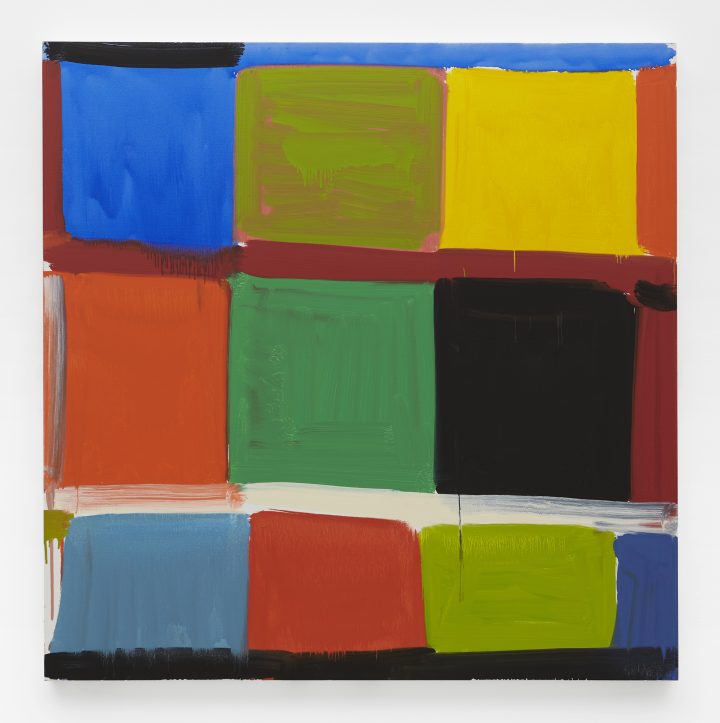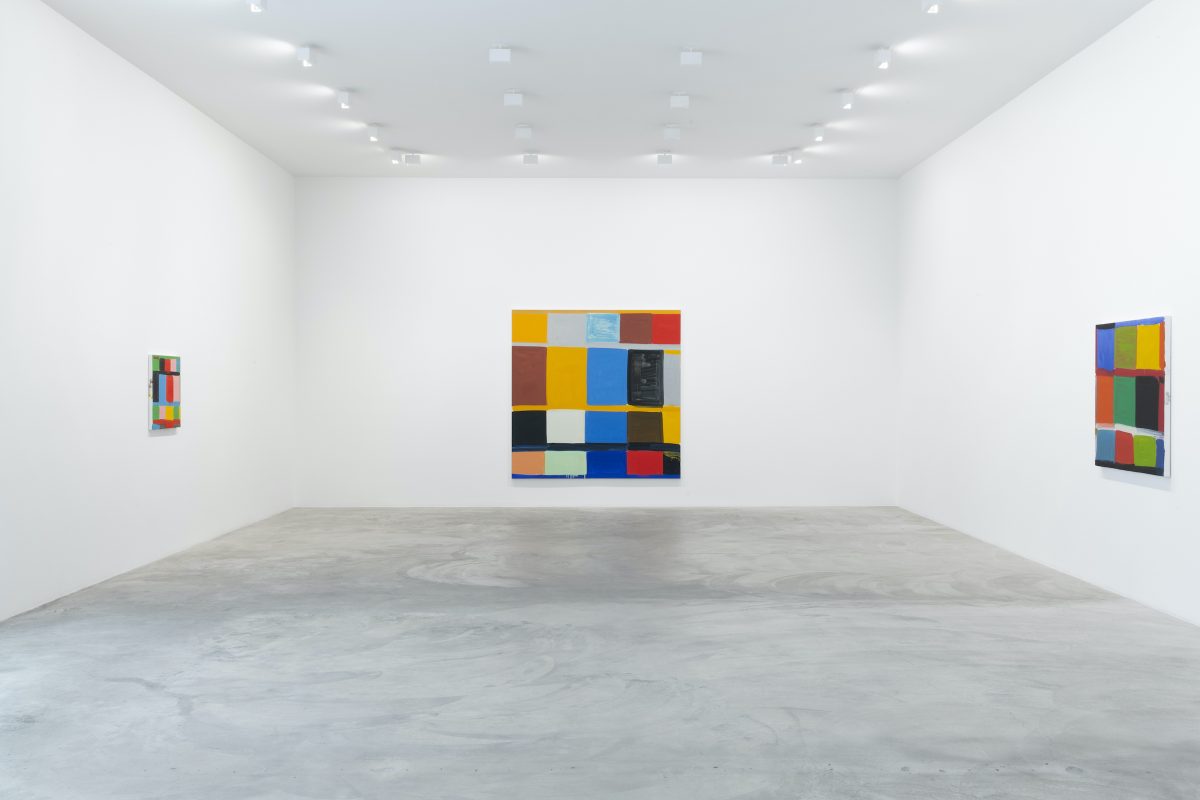
LOS ANGELES — “I can’t stand to sing the same song the same way two nights in succession,” Billie Holiday wrote in her autobiography, Lady Sings the Blues. To her, performing the same song without variation drained the idiosyncratic magic out of music, reducing it to automation. I thought about Holiday while walking through Stanley Whitney’s solo exhibition, How Black is That Blue, at Matthew Marks Gallery. The artist’s first major show in Los Angeles, the exhibition features 11 new works, nine oil paintings, and two gouache works on paper, and provides a crash course on Whitney’s improvisatory approach to abstraction.

Since 1996, Whitney has returned to the same format for his paintings: stacks of colorful rectangles arranged within a large square of canvas. His colors are brilliant and expressive, with jolts of tangerine oranges, drippy reds, and meditative azures. Each canvas follows its own off-beat rhythm, with three or four horizontal bands dividing each square into quirky grids. Like a jazz player riffing on the same chord or melody, Whitney’s paintings delight in the infinite possibilities contained within a simple motif or process. The Philadelphia-born, New York-based artist often cites experimental jazz as an influence on his practice, as well as Roman architecture, Egyptian hieroglyphs, and Gee’s Bend quilts.

In “Sun Moon” (2020), a yellow band matches a squat yellow block near the upper left-hand corner, opening up a pathway of space. These intuitive flourishes disrupt the homogeneity of the grid, infusing a sense of play and wonder. The bands can either reinforce the hectic rows or merge with random squares, making it impossible for the paintings to settle into a familiar pattern. The repetition of shapes put me in a trance, where I became more receptive to the dissonant moods of the brushstrokes, from layered, bombastic spurts to smooth, matte surfaces.
Roaming the naturally lit gallery space felt like listening to the same song on repeat, though every rendition brought forth a new memory, desire, and enigma.
Stanley Whitney: How Black is That Blue continues online and by appointment at Matthew Marks Gallery (1062 N Orange Grove Ave, West Hollywood, Los Angeles) through May 8.
0 Commentaires